For many years, HO scale modelers debated whether to use plastic or metal wheelsets on freight cars. That discussion has quieted down over the past two decades, largely because most new models come with metal wheelsets. However, as evidenced by the number of offerings available today, there’s still a strong demand for aftermarket metal wheelsets. Some prefer the appearance of one brand over another. Others want wheelsets with a narrower profile. Whatever the case may be, the guide to HO metal wheelsets will help you find the right products to keep your freight car fleet running smoothly.
Why metal wheelsets?
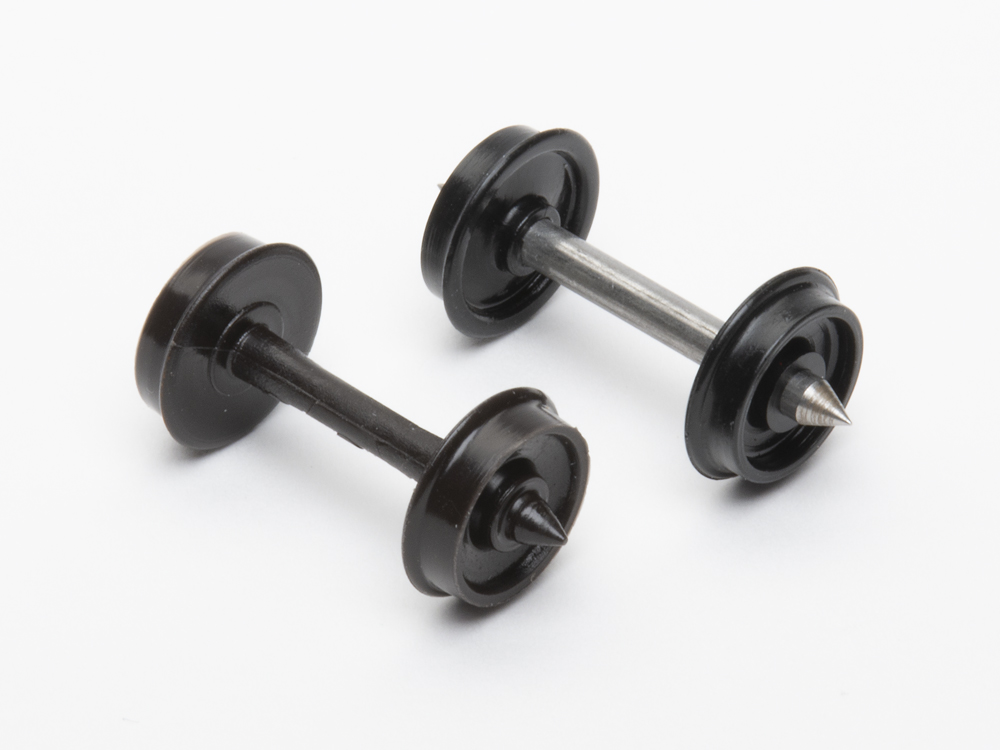
On the surface, the choice may seem obvious. Real trains use metal wheels, so our models should too, right? However, plastic does have some advantages. If the wheels and axle are a single casting, such as those found on Accurail freight cars, the wheels will stay in gauge. That doesn’t hold true on wheelsets included with Athearn and Model Die Casting (Roundhouse) kits, where the plastic wheels were mounted on a metal axle.
Plastic also has the benefit of being non-magnetic. This matters if you use magnetic uncoupling ramps. Some wheelsets use steel axles, which are magnetic and can be pulled toward the magnet, potentially causing an unwanted uncoupling.
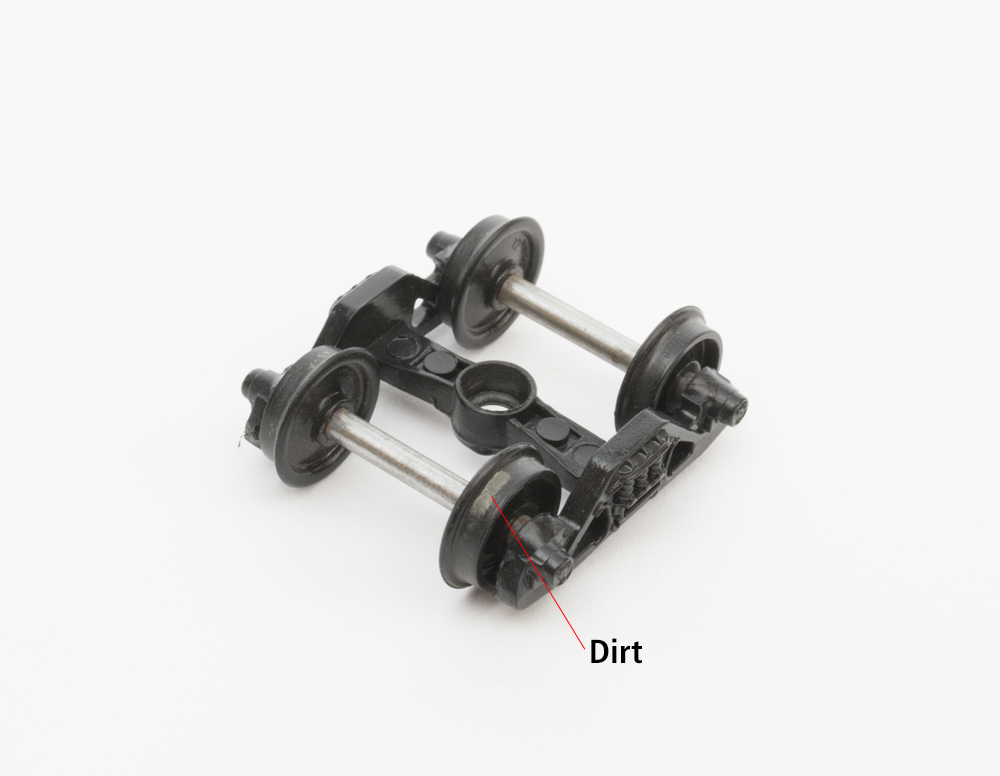
While plastic wheelsets have some advantages, they also have drawbacks. The major challenge is the amount of dirt that plastic wheel treads accumulate. Since plastic wheels are non-conductive, they develop a static charge. This attracts dirt, dust, and other debris that builds up on the tread.
What are the advantages of metal wheelsets? First, the friction of the metal wheels on metal rails helps polish both surfaces. Metal wheelsets also add extra weight to models and help lower their center of gravity.
Plenty of variety
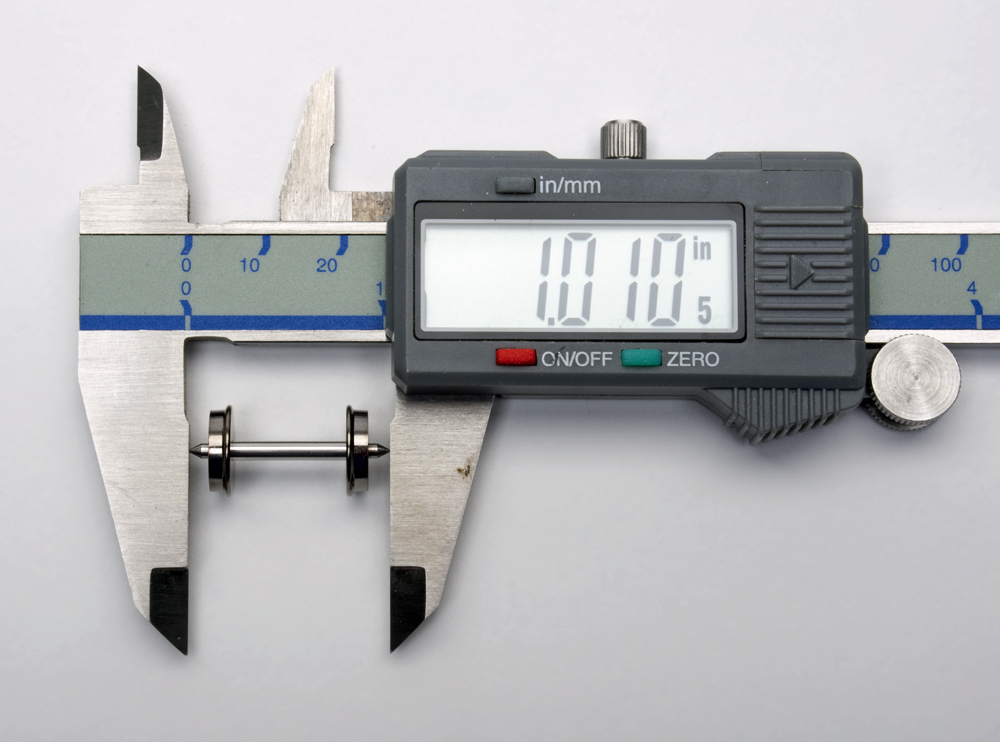
When you search for HO scale wheelsets at your local hobby shop or online, you may initially be overwhelmed by the number of offerings. Things you’ll need to consider are axle length, wheel size, wheel type, plastic or metal axles, and tread width.
Metal wheelsets are not one-size-fits all. If you replace the stock wheelsets on your freight car with an aftermarket offering, make sure the new ones will fit in the trucks. Most replacement wheelsets specify the axle length or the specific trucks for which the wheelsets are designed. The easiest way to check the axle length on your model is with calipers. Measure the distance between the tips of the axles and search for suitable replacements.
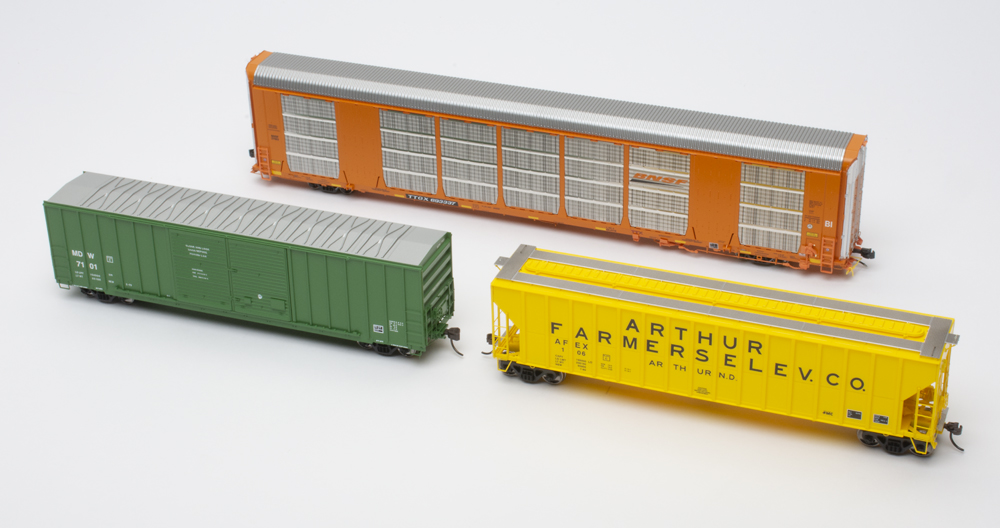
A common question asked by new modelers is, “What size wheels should I use on my freight cars?” The answer depends on the car’s capacity. Cars with a capacity of 70 tons or less (and most cabooses) use 33″-diameter wheels. Covered hoppers, tank cars, gondolas, and other cars with a capacity of 100 and 110 tons have 36″-diameter wheels. The intermediate wheels on articulated 125-ton capacity well cars feature 38″-diameter wheels (the end trucks have 33″-diameter wheels). A caveat to this rule is modern auto racks. The wheels on these cars are 28″ diameter to keep the car profile low for clearance purposes.
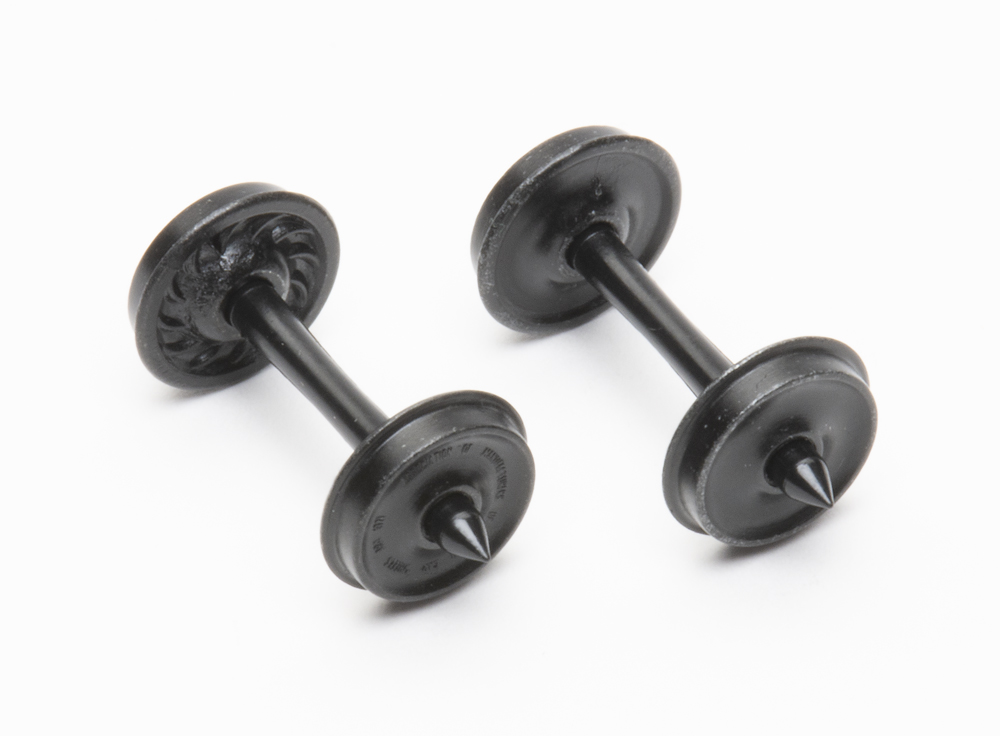
You also want to make sure you use the correct wheel style for the era that you’re modeling. Cast-iron wheels (also called “chilled” wheels for the heat-treating process used on them) were common on early freight cars. They usually had ribs on the back, which helped dissipate heat created by braking. These wheels were not allowed on new or newly rebuilt cars as of Jan. 1, 1958. Cars with these wheels couldn’t be interchanged after 1970.
Cast and wrought steel wheels (without ribbed backs) started appearing in the 1920s. As the steam era wound down, steel wheels were the norm on most freight cars. Today’s freight cars all have wheels of wrought or cast steel.
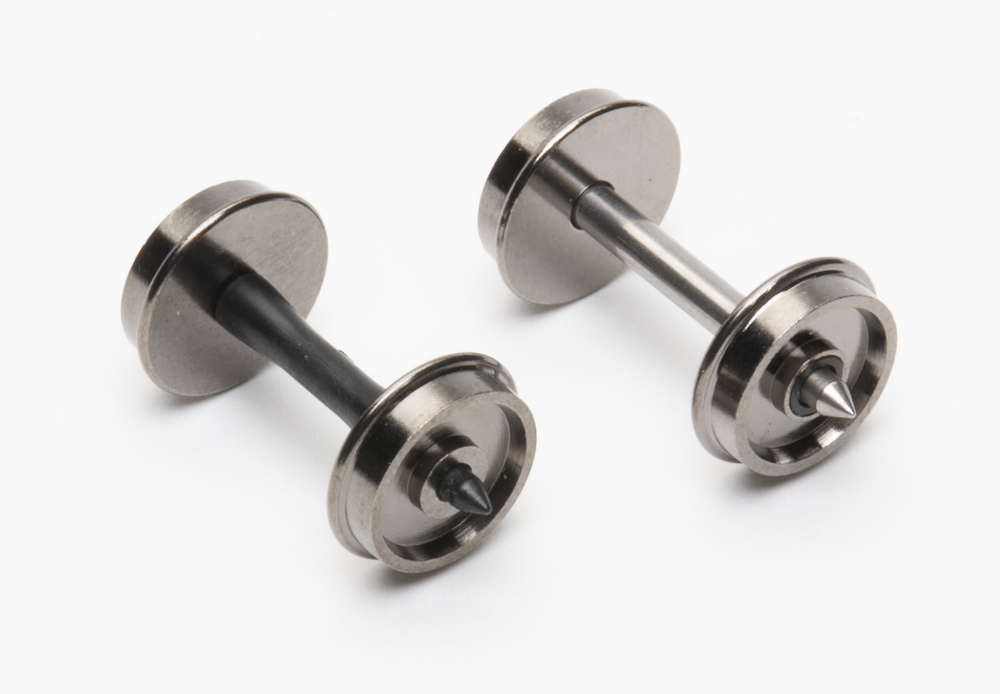
You’ll also notice that some metal wheels are mounted on plastic axles, while others are on metal axles. Which one is better? That’s a matter of personal preference. The wheels on plastic axles are typically a few dollars cheaper than the all-metal counterparts. However, if the wheels are applied to the axles with too much force at the factory, it may distort the plastic, causing the wheels to wobble. If I have a choice, I go with all-metal construction.
Wheel tread width
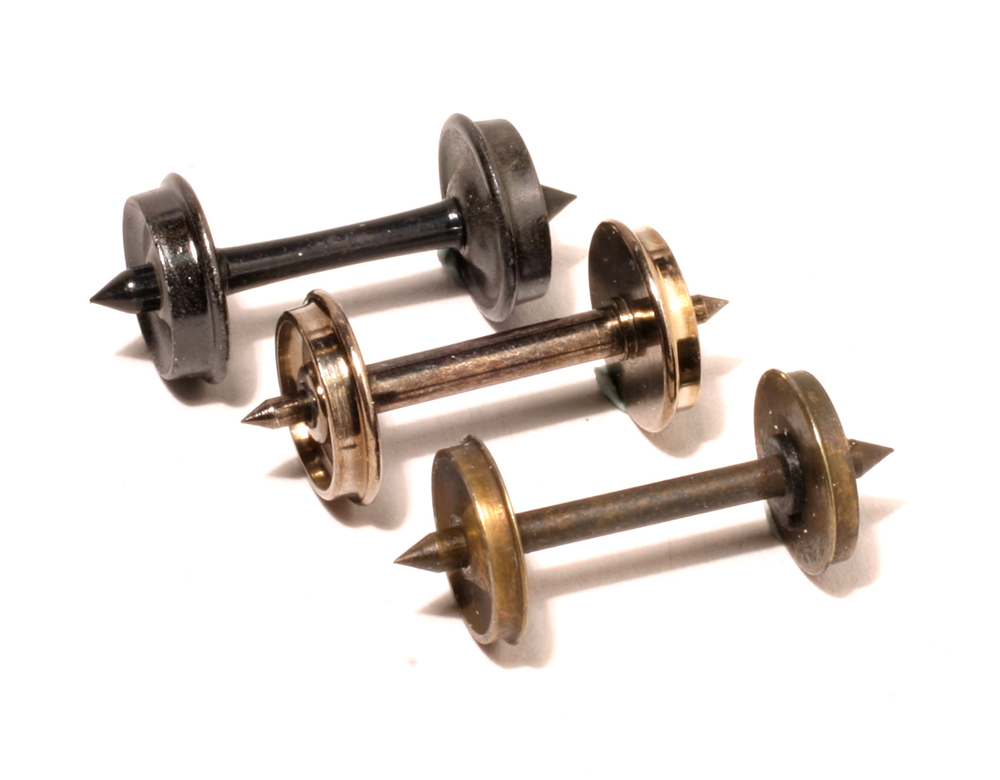
The stock wheels on many HO models have a .110″ wheel tread width (flange and tread), which is compatible with most model track. This is also the width noted in National Model Railroad Association (NMRA) Recommended Practice 25. However, these wheels are significantly wider than those found on prototype cars.
To address the oversized .110″ wheels, some manufacturers have produced “semi-scale” wheels with a tread width of .088″. Though narrower, the wheels still operate on most commercial track. There are instances where .088″ wheels may fall into flangeways on some turnouts. It’s always best to run a test car with semi-scale wheels across your layout to check for trouble spots before replacing the wheelsets on all your freight cars.
A few manufacturers offer wheels that are truly scale size, following specific prototype dimensions. These wheels are used by modelers building their layout to fine scale, or Proto:87, standards.
Scale wheels look terrific, but they unfortunately aren’t compatible with most commercial track. Sectional turnouts and crossings are designed with wider tolerances, which means scale wheels can drop into flangeways and turnout frog gaps.
Where to find metal wheelsets
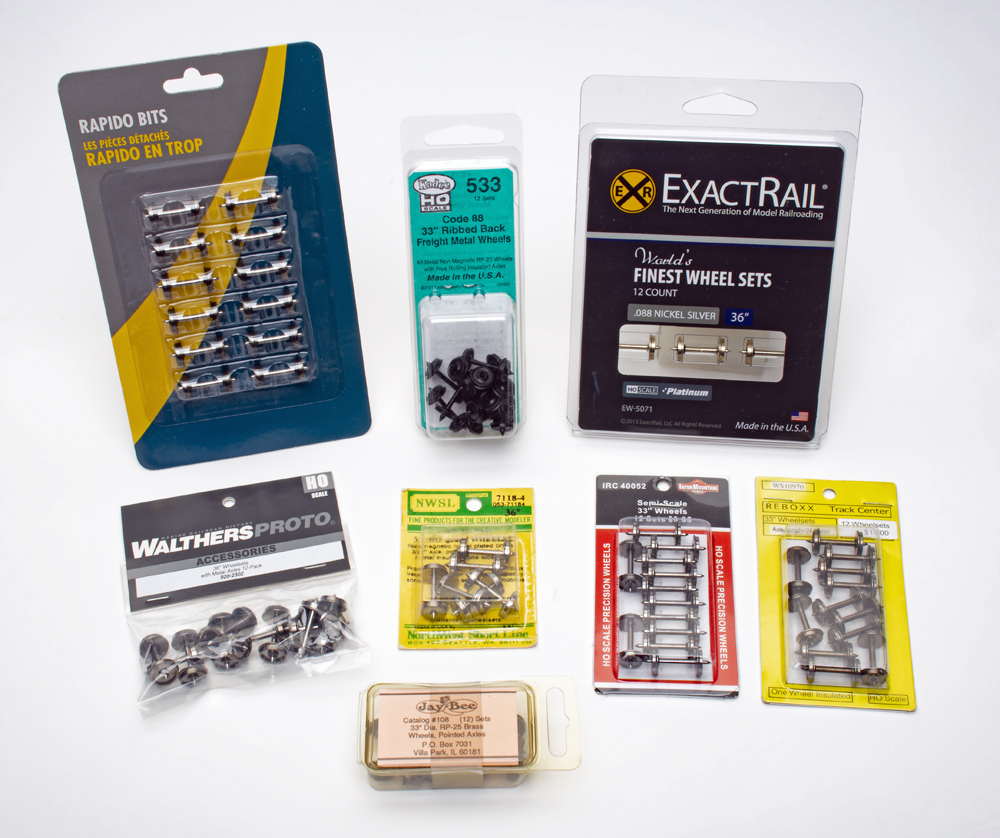
The following is a directory of companies that produce HO scale metal wheelsets. If we’ve omitted any manufacturers, please let us know in the comments field below.
ExactRail (now ScaleTrains)






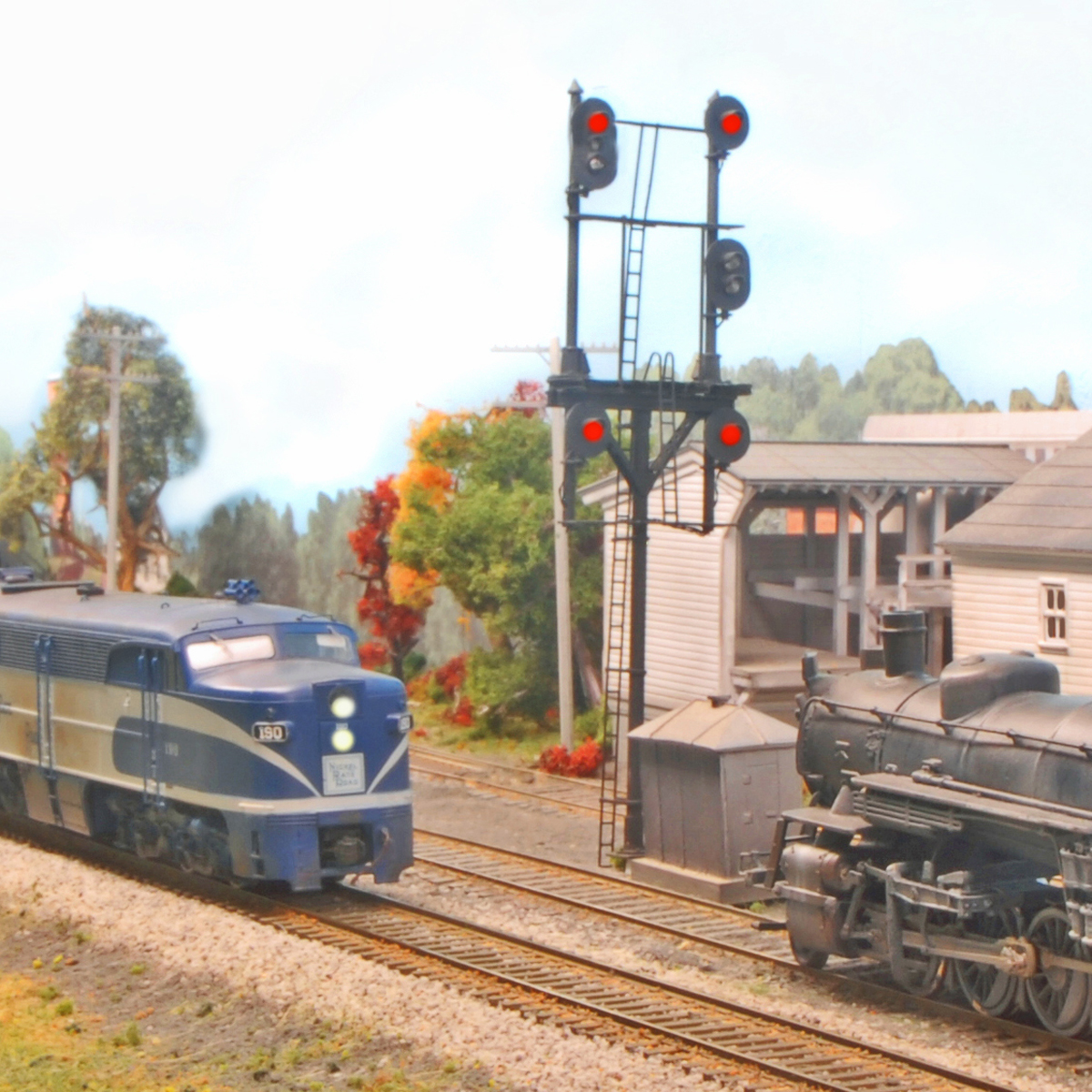
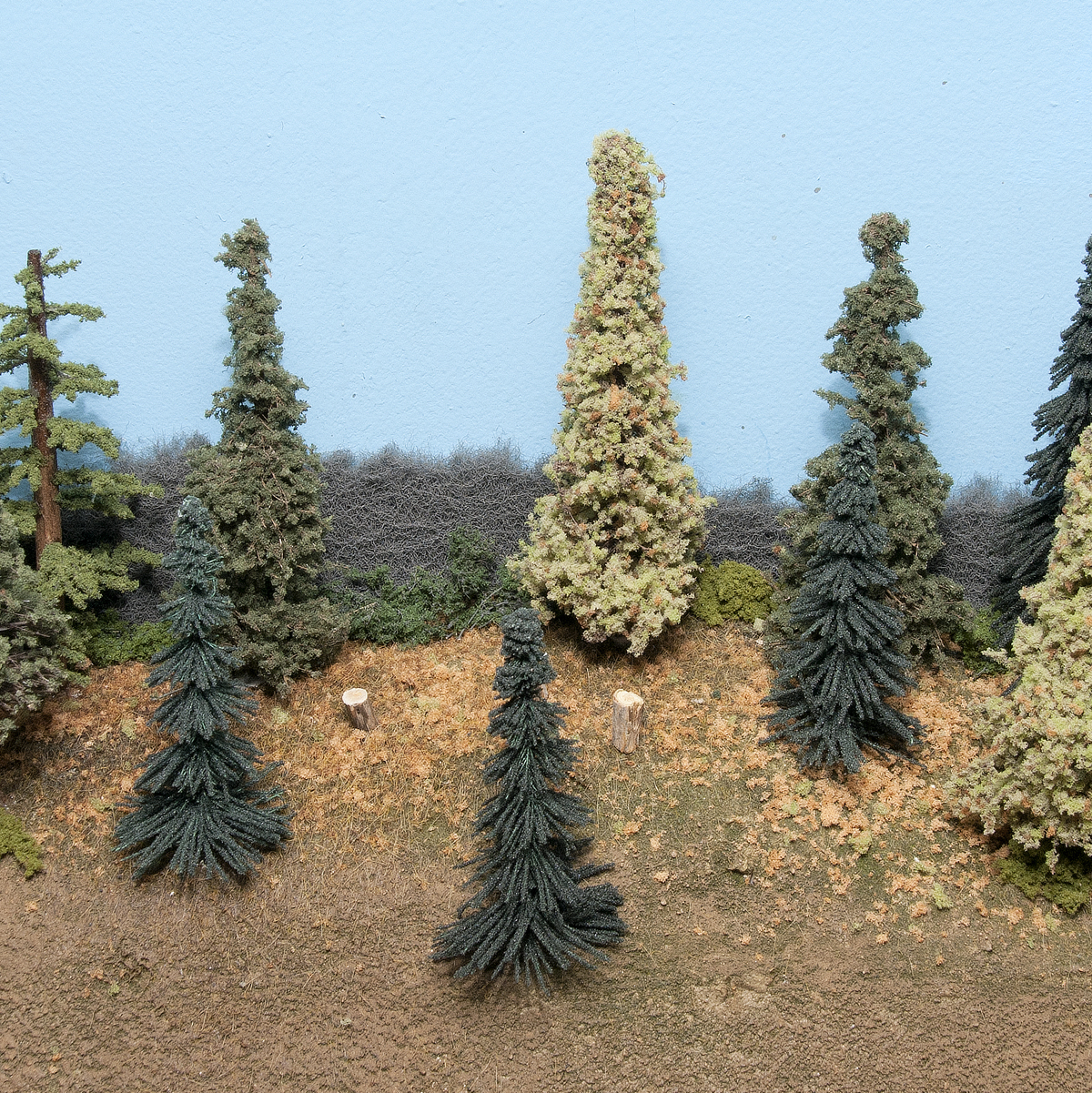
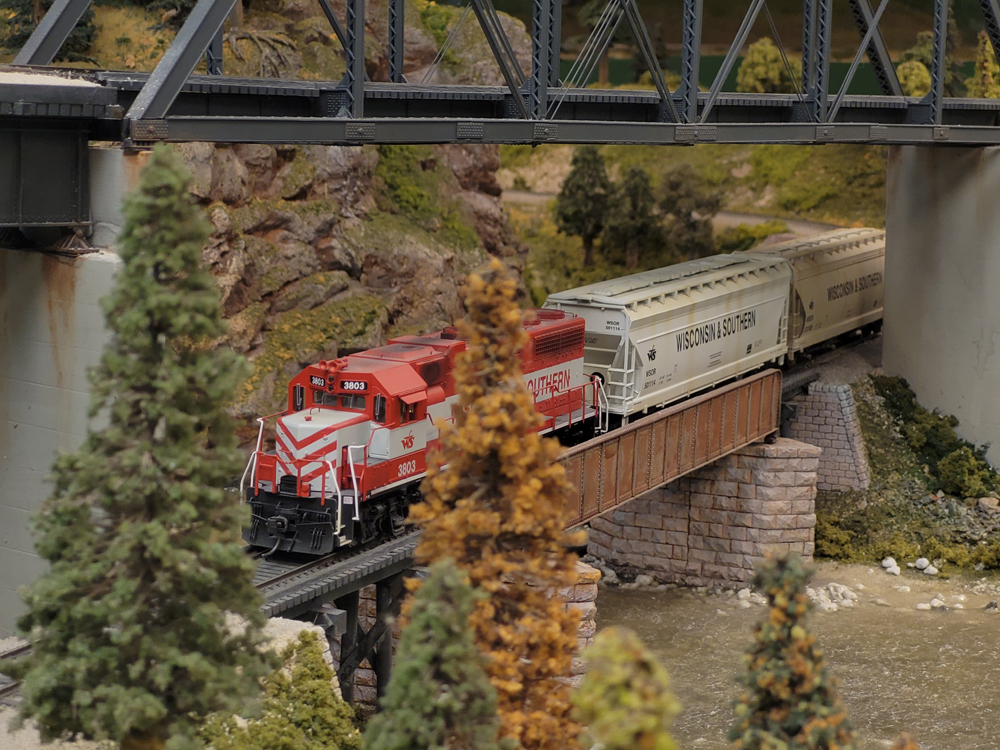
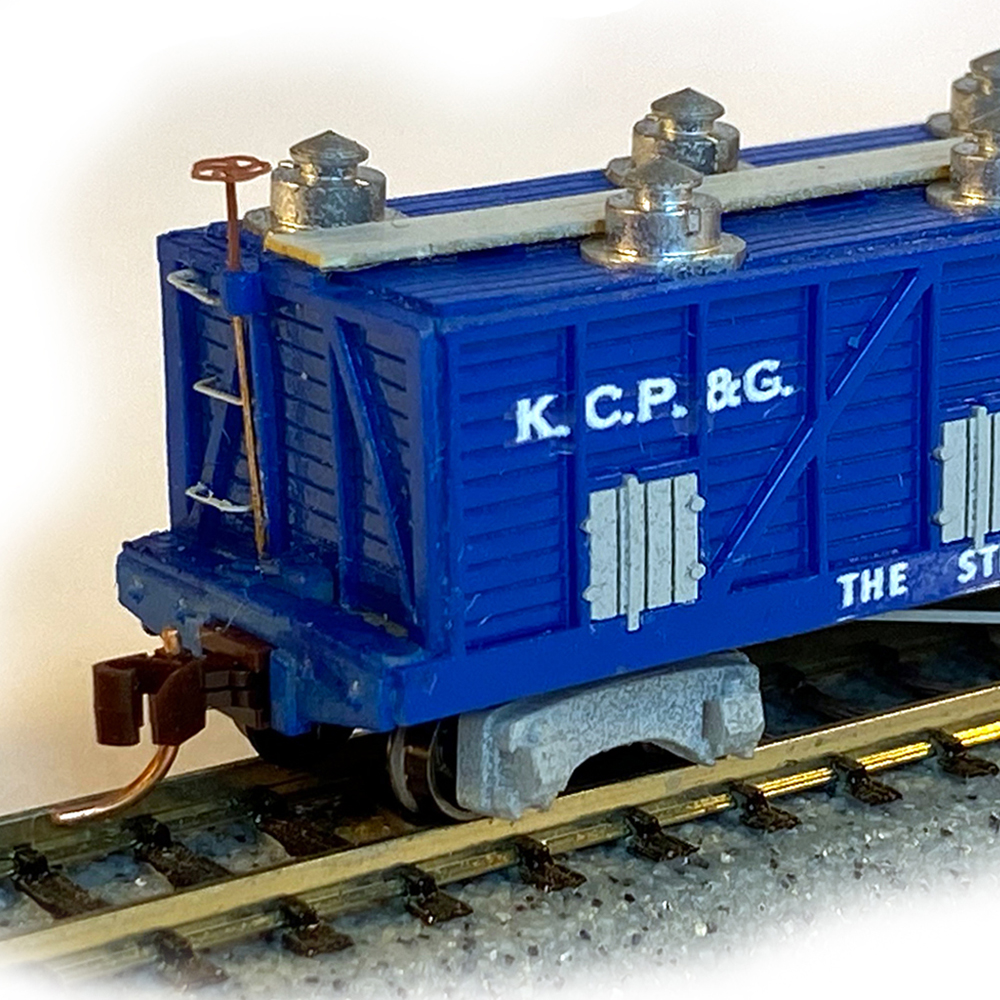




It would be a great help if you’d add the axel lengths next to the list of company names. Many of us have some but certainly not all of these. It would help shopping for that special car’s needs. With Reboxx out of the business, I’m not even sure if anyone makes more than one length. Thanks.
One thing to note, of replacing wheelsets on Passenger equipment that had metal trucks, like walthers proto series passenger cars, you want wheelsets with a plastic axel because the metal axel will create a short between the 2 side frames.